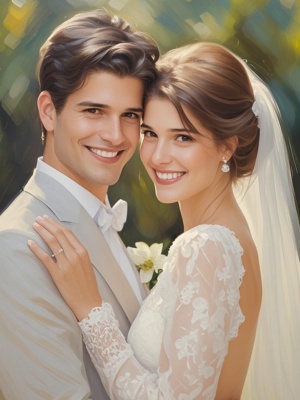The Timeless Allure of Antique Oil Painting Portraits
Introduction: Capturing History Through Brushstrokes
Antique oil painting portraits represent one of the most fascinating chapters in art history, serving as both artistic masterpieces and historical documents. These works offer us a window into past societies, revealing fashion trends, social hierarchies, and personal identities through the skilled hands of master painters. From Renaissance nobility to 19th century bourgeoisie, portrait oil paintings have preserved human stories for centuries.
Today, antique portraits continue to captivate collectors and art enthusiasts alike. Whether displayed in museums or private collections, these works maintain their power to connect us with our cultural heritage. For those interested in exploring modern interpretations of portrait art, our gallery showcases contemporary approaches to this timeless tradition.
The Evolution of Portrait Oil Painting Techniques
Early Renaissance Innovations
The 15th century saw revolutionary developments in oil painting techniques that transformed portrait art. Flemish painters like Jan van Eyck perfected the use of layered glazes, creating unprecedented depth and realism. Key characteristics of these early masterpieces include:
- Meticulous attention to fabric textures and jewelry details
- Symbolic elements conveying the subject's status or virtues
- Subtle psychological depth beyond mere physical likeness
Baroque Drama and Enlightenment Refinement

By the 17th century, artists like Rembrandt and Velázquez elevated portrait painting to new heights of emotional expression. Their techniques addressed common artistic challenges:
| Problem | Solution |
|---|---|
| Flat, lifeless appearance | Chiaroscuro lighting creating dramatic depth |
| Stiff, formal poses | Naturalistic compositions capturing movement |
| Limited emotional range | Psychological depth through expressive brushwork |
Identifying and Authenticating Antique Portraits
For collectors and art historians, verifying the authenticity of antique oil portraits requires careful examination of multiple factors. The process typically involves:

- Material analysis of paint layers and canvas
- Brushwork comparison with known works by the artist
- Provenance research tracing ownership history
- Scientific dating methods like X-ray and infrared imaging
According to experts at the National Gallery, approximately 40% of purported old master portraits undergo significant attribution changes during professional evaluation. This underscores the importance of thorough authentication.
Preservation Challenges and Modern Solutions
Antique oil portraits face numerous threats to their longevity, from environmental factors to previous restoration attempts. Common preservation issues include:

- Yellowing varnish layers obscuring original colors
- Paint cracking due to improper storage conditions
- Canvas weakening from humidity fluctuations
Modern conservation techniques have developed innovative solutions, many of which parallel the AI photo restoration methods used for preserving historical photographs. These include:
- Non-invasive cleaning using laser technology
- Microscopic paint analysis for accurate color matching
- Climate-controlled display cases maintaining optimal conditions
The Contemporary Market for Antique Portraits
The market for antique oil painting portraits remains vibrant, with several notable trends emerging in recent years:
- Growing interest in previously overlooked female portraitists
- Increased demand for bourgeois rather than aristocratic portraits
- Rising prices for well-preserved 18th-19th century works
According to Christie's auction records, exceptional portrait examples have achieved prices exceeding $10 million, while more accessible pieces can be found in the $5,000-$50,000 range for emerging collectors.
Conclusion: The Enduring Legacy of Portrait Art
Antique oil painting portraits continue to fascinate us because they represent more than just artistic skill - they embody human connections across centuries. These works remind us that while fashions and technologies change, our fundamental desire to capture and understand human identity remains constant.
For those inspired to create their own portrait masterpieces, modern tools like those featured in our AI painting guide offer exciting new possibilities while honoring traditional artistic values. Whether appreciating old masters or creating new works, the portrait tradition remains one of art's most powerful forms of human expression.